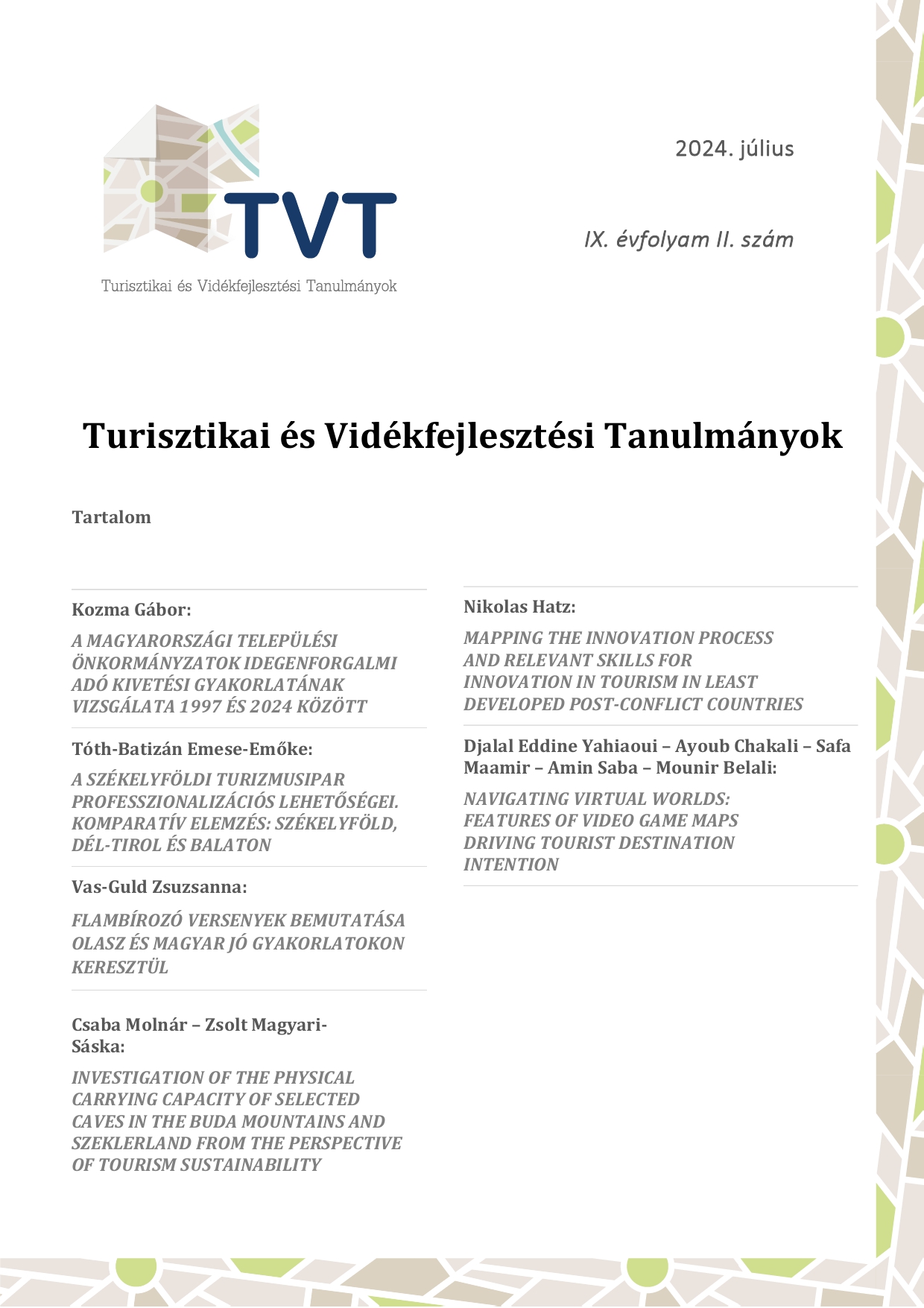Investigation of the physical carrying capacity of selected caves in the Buda Mountains and Szeklerland from the perspective of tourism sustainability
DOI:
https://doi.org/10.15170/TVT.2024.09.02.04Keywords:
cave tourism, ecotourism, physical carrying capacity, sustainable development, quantitative analysisAbstract
The desire to escape everyday life, the allure of nature's beauty, and the exploration of underground worlds that are accessible, often within developed areas, are increasingly driving tourist demand for caves. Visiting caves, whether from a tourist or professional perspective, is the discovery of a natural wonder, an exhilarating and unforgettable adventure for most tourists. From an ecotourism standpoint, beyond ensuring a fulfilling tourist experience, safeguarding the integrity of the cave system as a whole is paramount, as sustainability and preservation are both crucial. To this end, this study aimed to investigate the physical carrying capacity of caves in four locations with significant tourist potential at various geographical locations. Through on-site research, the recommended maximum number of visiting groups was determined for each cave, considering the size of the usable area for tourism activities and the social comfort distance of visitors. This is vital to prevent overcrowding in narrow sections during tours and may aid in the preservation of the cave and its formations. The research results obtained in this manner were compared with current visitor data. This comparison revealed what the optimal number of visitors is during existing tourist activities, how tourism impacts cave preservation, and whether it contributes to degradation, necessitating a reduction in visitor numbers.


